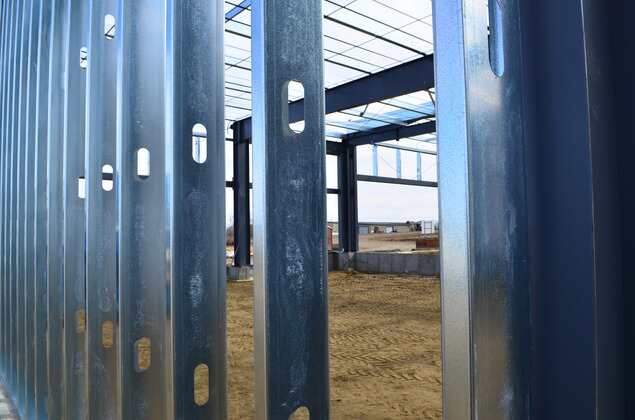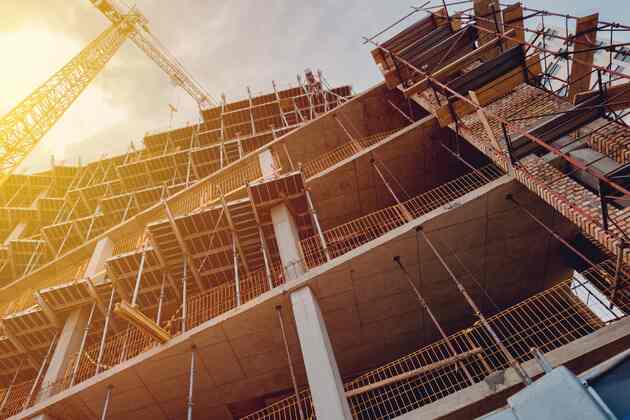What Is Masonry Work? Key Types
From ancient pyramids to modern skyscrapers, humans have always pushed the limits of construction. The secret to our success? Mastering different types of building techniques.
Construction types refer to the fundamental methods and materials that create structures. A building’s type determines its strength, fire resistance, and overall performance.
Here’s a guide to the five main construction types recognized in the building industry. Learn each one’s unique characteristics and its pros and cons.
RELATED ARTICLE — How To Start a Home Renovation Business
The 5 Types of Building Construction
Buildings come in many shapes and sizes, which means they’re built in many different ways. These methods are also known as building construction types. The categories mostly have to do with fire resistance and safety.
Each type has individual features that make it safer or more effective for certain uses. And knowing about each one helps you decide which to use for different projects.
The five main types of building construction are:
- Fire-Resistive. These buildings use materials that don’t burn easily, like concrete and protected steel. They can withstand fire for a long time.
- Non-Combustible. This type is similar to Type 1, but not quite as fire-resistant. It still uses materials that don’t catch fire easily, making it safer than most.
- Ordinary. This type has exterior walls that don’t burn, but the inside is made of wood. It’s a mix of fire-safe and regular materials.
- Heavy Timber. These buildings use big pieces of wood that burn slowly. This makes them safer in fires than you might imagine.
- Wood-Framed. Most houses are built this way. This method uses regular wood, like two-by-fours, and is great for smaller structures.
RELATED ARTICLE — How To Ask for Deposits as a Residential Contractor (+ Samples)
Type 1 Construction: Fire-Resistive

The main goal of Type 1 construction is to keep people safe in case of fire. These buildings are made with special materials that don’t burn easily—or sometimes at all.
This method is common for big, important building types like hospitals, schools, and tall office towers. The walls, floors, and roof are all built to resist fire for hours. This gives people more time to get out safely if there’s an emergency.
Here’s more information about Type 1 construction:
- Materials. These buildings use strong materials like concrete and steel. The steel is often covered with special coatings or wrapped in fire-resistant materials to protect it from heat.
- Advantages. Type 1 buildings are very safe in fires. They’re also strong and can last for many years. This makes them perfect for areas where lots of people gather, like a city’s downtown core.
- Disadvantages. Building a Type 1 structure costs more than other types. It also takes longer to build because of all the special materials and methods used.
- Special Features. Many Type 1 buildings have sprinkler systems throughout. They also have special fire exits that help people get out quickly and safely in an emergency.
FROM ONE OF OUR PARTNERS — Commercial Construction Versus Residential Construction: 6 Differences You Should Know
Type 2 Construction: Non-Combustible
Like Type 1, the main goal of Type 2 construction is to use materials that don’t burn easily. This helps slow down fires and gives people time to get out safely.
The outer walls and roof are made of materials that don’t catch fire, but some parts inside might not be as fire-resistant as in Type 1 buildings. The materials aren’t typically coated in fire-resistant chemicals.
Here’s more about Type 2 construction:
- Materials. These buildings use materials like metal, concrete, and gypsum board (drywall).
- Advantages. Type 2 buildings are safer in fires than many other types. They’re also strong and can last a long time. Plus, they’re less expensive to build than Type 1 buildings.
- Disadvantages. They’re not as fire-resistant as Type 1 buildings. They might also have height limits.
- Special Features. Many Type 2 buildings have fire alarms and sprinkler systems. They often have fire-resistant doors and walls between different parts of the building.
RELATED ARTICLE — How To Become an Independent Contractor: A Complete Guide
Type 3 Construction: Ordinary
The main idea behind Type 3 construction is to have strong, fire-resistant outer walls but use regular materials inside to save money. The outside walls don’t burn easily, because they are made of materials like brick or concrete. But the inside walls, floors, and roof are often made of wood.
RELATED ARTICLE — How To Estimate a Masonry Job (in 7 Easy Steps)
Here’s what you should know about Type 3 construction:
- Materials. Outside walls are made of brick, masonry, and other materials that don’t burn. Inside, you’ll find lots of wood.
- Advantages. These buildings are cheaper to build than Types 1 and 2. They’re also easier and faster to construct.
- Disadvantages. They’re not as fire-resistant as Types 1 and 2, especially on the inside. They might not last as long as buildings made with more fire-resistant materials.
- Special Features. Compartmentalization using fire-rated walls can help prevent the spread of fire from one part of the building to another.
RELATED ARTICLE — How To Make an Estimate for Construction (in 7 Steps)
Type 4 Construction: Heavy Timber
The main goal of Type 4 construction is to use big pieces of wood that burn slowly. Even though they’re made of wood, the size of the lumber used means they’re good at resisting fire. This type of construction is common in churches, barns, and factories.
Here’s more about Type 4 construction:
- Materials. You’ll find lots of large wooden beams and columns. The outer walls are often made of non-combustible brick or concrete.
- Advantages. These buildings are strong and can resist fire relatively well. They’re typically less expensive than Types 1 or 2.
- Disadvantages. They’re not quite as fire-resistant as other types. Water damage can also become a problem if these buildings aren’t cared for properly. And the wood used must be a certain size to count as “heavy timber.”
- Special Features. These buildings often have high ceilings and a rustic look that many people like.
RELATED ARTICLE — How To Price Subcontract Work
Type 5 Construction: Wood-Framed
The main idea of Type 5 construction is to use wooden boards to create the structure of the building: the walls, floors, and roof. It’s a simple and cost-effective way to build, which is why it’s so popular for homes and small buildings.
Here’s what you need to know about Type 5 construction:
- Materials. Wooden boards are used for most of the building. Other materials like drywall, siding, and shingles finish the structure.
- Advantages. These buildings are cheaper and faster to build than other types. They’re also easy to change or add onto later.
- Disadvantages. Type 5 buildings are the least fire-resistant of all the types. And water, insects, and strong winds can lead to serious damage.
- Special Features. Many Type 5 buildings use special fire-resistant materials between apartments or attached homes to improve safety.
RELATED ARTICLE — How To Invoice for Handyman Services
4 Pro Tips to Efficiently Manage Construction Projects

No matter which type of construction you’re working with, managing a building project can be tricky. Here are some tips to help you keep things running smoothly:
- Plan Your Tasks. Make a detailed schedule of what needs to be done and when so you don’t forget anything. This is especially important when it comes to fire safety. A skipped step can be detrimental.
- Have Everything You Need. Check your tools and materials before starting work each day to avoid delays caused by missing items. Last-minute purchases can be expensive.
- Track Progress. Use a chart or app to monitor progress so you know whether you’re on schedule.
- Communicate. Talk often with your team and your clients to catch problems early. Communication is key to keeping everyone happy.
RELATED ARTICLE — How To Offer Financing as a Home Services Contractor
Stay Organized and Manage Customers on the Go
Just as organization is critical for a successful building project, keeping track of customer information is indispensable for a construction business. Thankfully, Joist does the work for you.
With Joist’s contractor software, you can store, access, and export customer information from anywhere, at any time. Keeping track of customers and jobs just got that much easier.